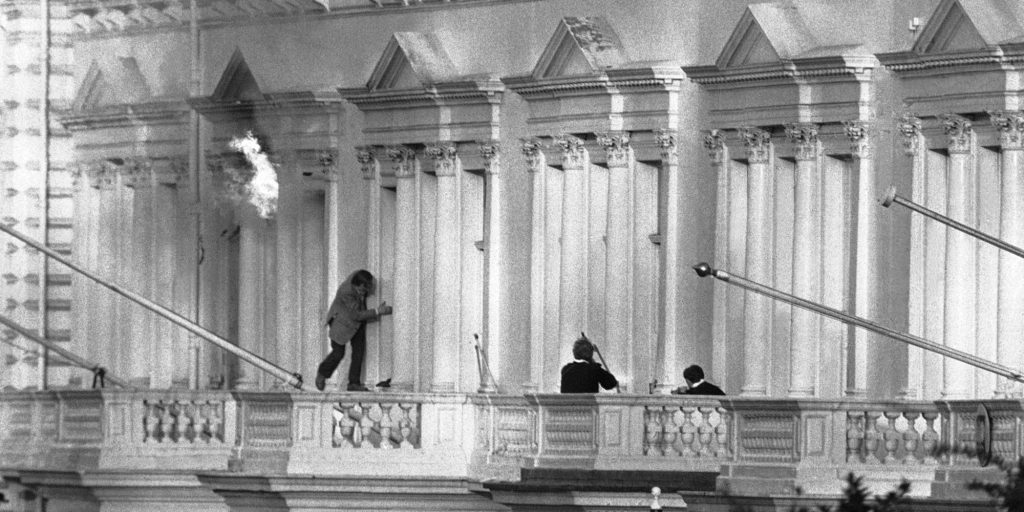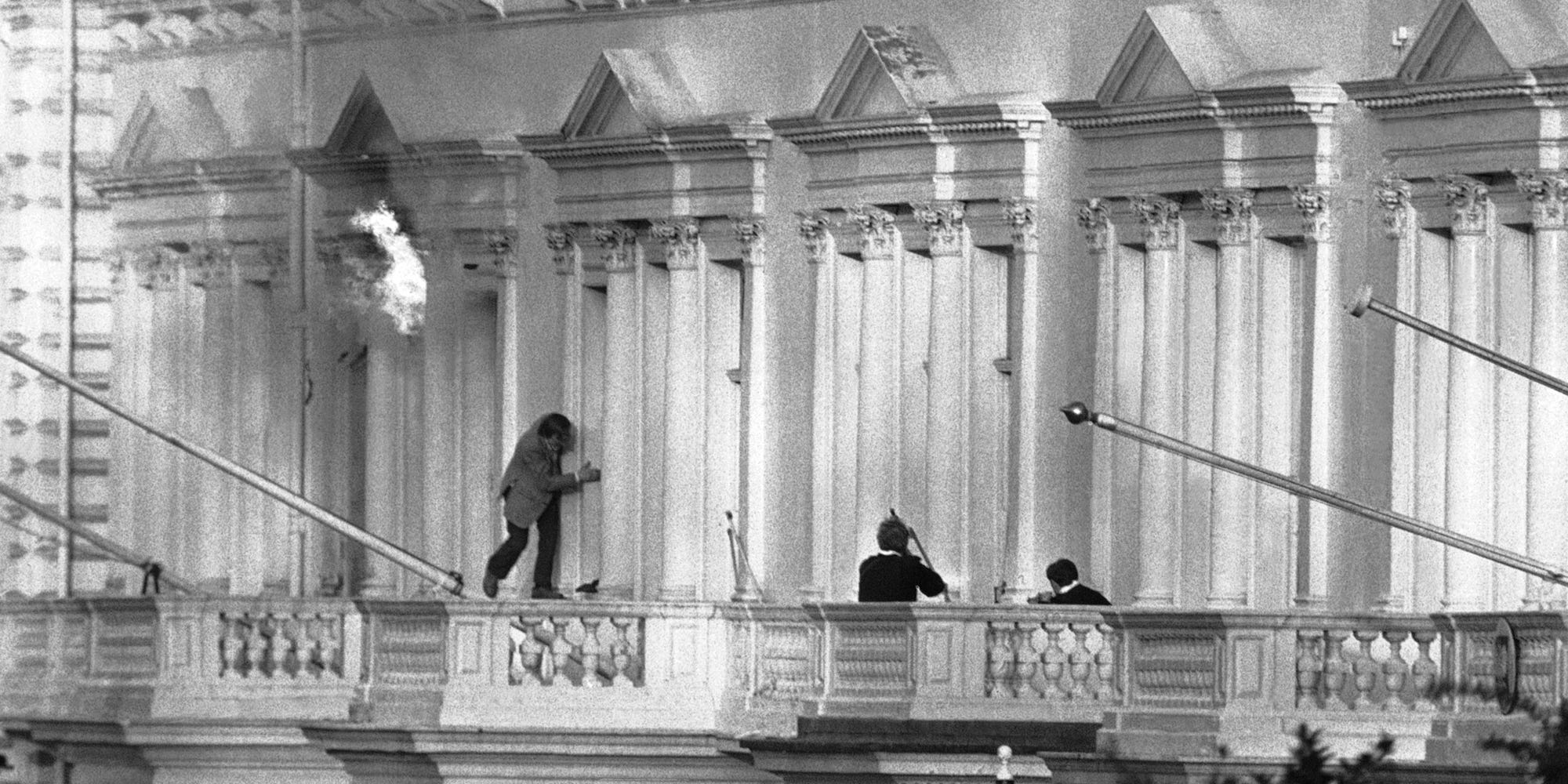
AP Photo
- On April 30, 1980, Iranian terrorists stormed Iran's Embassy in London and took two dozen hostages.
- After six tense days, the British SAS freed hostages with a daring raid captured on live television.
- See more stories on Insider's business page.
On April 30, 1980, a group of six Iranian terrorists stormed the Iranian Embassy in London and took the diplomatic staff and several bystanders hostages.
The hostage-takers were members of an obscure Arab terrorist organization who opposed Ayatollah Khomeini and wanted Iran to give autonomy to Arabistan, or Khuzestan Province, a small but oil-rich province in southwest Iran.
Their intrusion began an ordeal that would end with a spectacular raid by the UK's top special-operations unit, the Special Air Service (SAS), on May 5.
In a first, the rescue was captured on live television, giving the SAS, which was created during World War II, newfound fame.
The advent of international terrorism as a form of political pressure in the 1970s pushed the SAS to shift from its focus on direct-action and reconnaissance to specializing in counterterrorism and hostage rescue.
Hostage rescue is one of the toughest special-operations mission-sets, as it requires not just reconnoitering an area and neutralizing an enemy but also applying surgical force when and where necessary so hostages aren't harmed.
A long six days
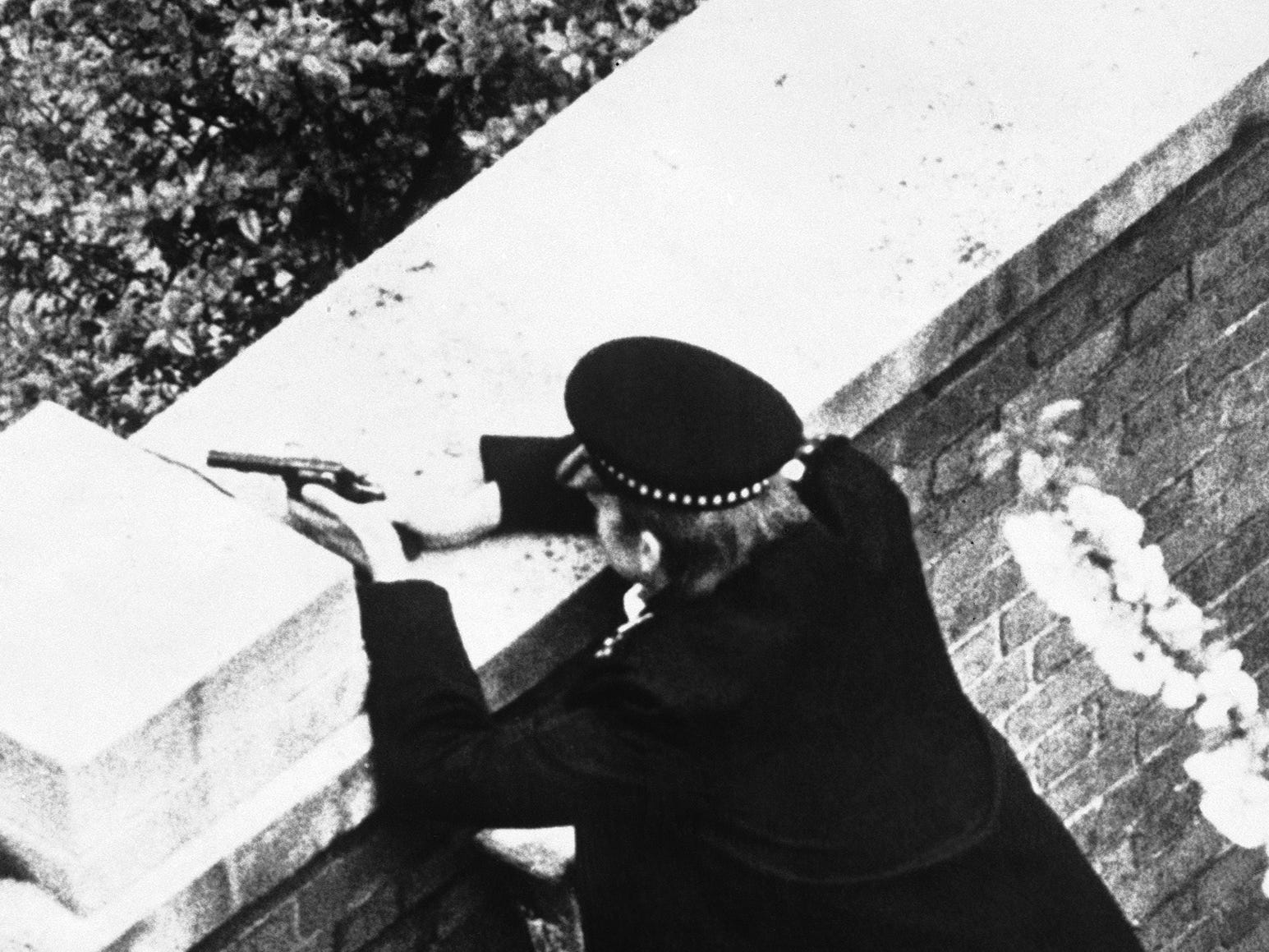
AP Photo
Within minutes of the terrorists' intrusion, the SAS had been notified and spun up. With the motto "prior planning and preparation prevents piss-poor performance," or the Seven Ps, the SAS operators got to work.
The SAS always has a squadron on standby for counterterrorism contingencies, with the assignment rotating among the unit's squadrons. The task of responding to the embassy fell to B Squadron, which was the team on a 30-minute standby for such contingencies.
Delta Force and SEAL Team 6 - the US military's equivalent counterterrorism and hostage-rescue Tier 1 units - follow the same readiness schedule. The Delta Force squadron on no-notice standby is called "Aztec," while the SEAL Team 6 squadron is called "Trident." The assignments rotate between the units' squadrons.
B Squadron was composed of two teams, Red Team and Blue Team, and the assault force was made up of about 35 SAS operators. They had planned a counterterrorism exercise, so their gear and vehicles were already packed and ready to go.
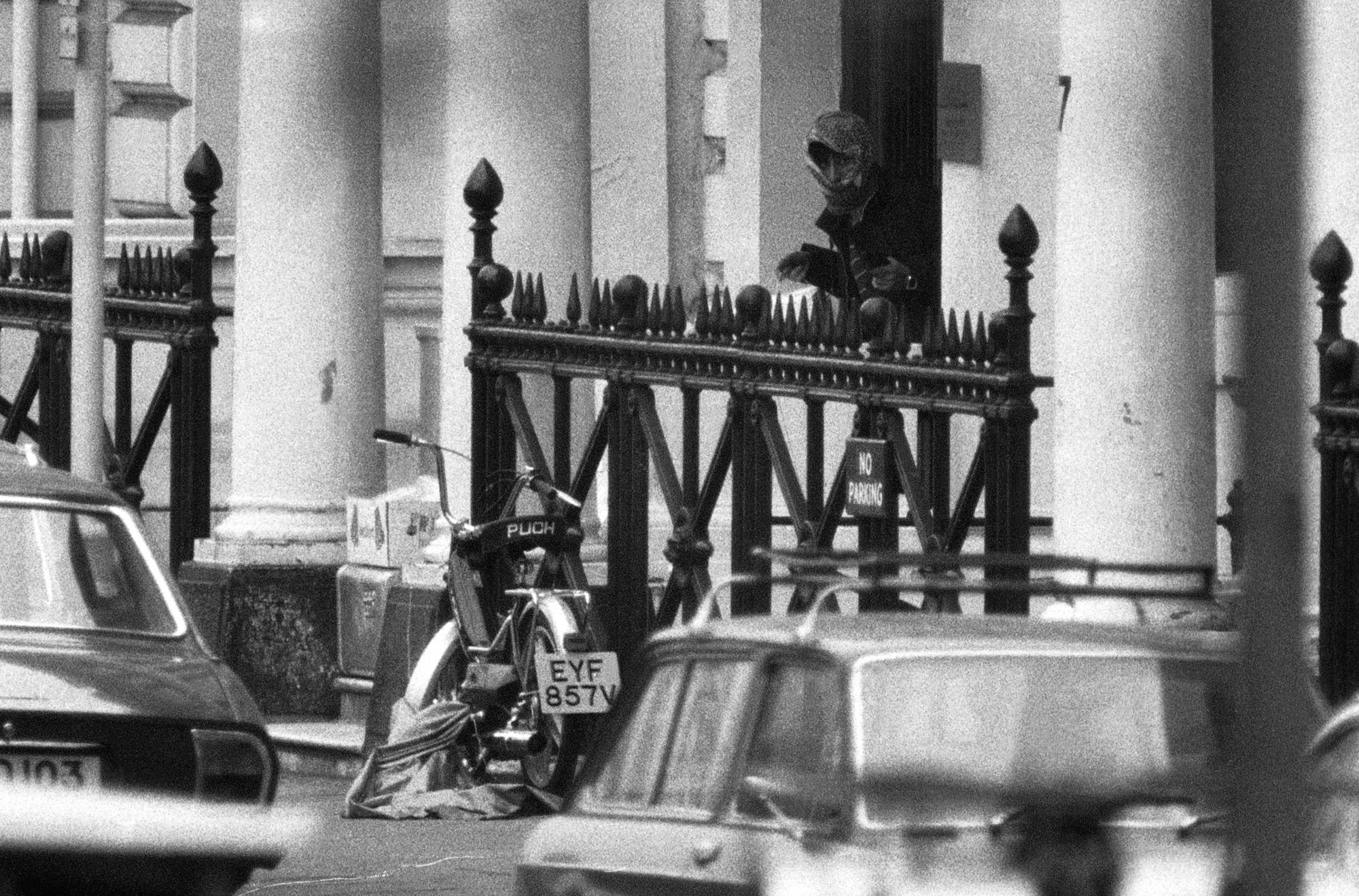
AP Photo
Red Team was deployed next to the embassy in case they had to go in immediately. Blue Team was stationed in the nearby Regent's Park barracks and could reinforce their teammates if needed.
The next day, however, Blue Team also moved next to the embassy because they were worried that London traffic might delay them in an emergency. The two teams had rotating shifts on standby.
On the third day of the ordeal, more SAS operators covertly arrived at the buildings adjoining the Iranian Embassy and were on a 24-hour standby to go in if the negotiations failed.
On the fourth day, the SAS managed to pinpoint the location of the hostages on the second floor of the embassy and also locate a definite entry point into the building. Negotiations at this point were still taking place through a talking window.
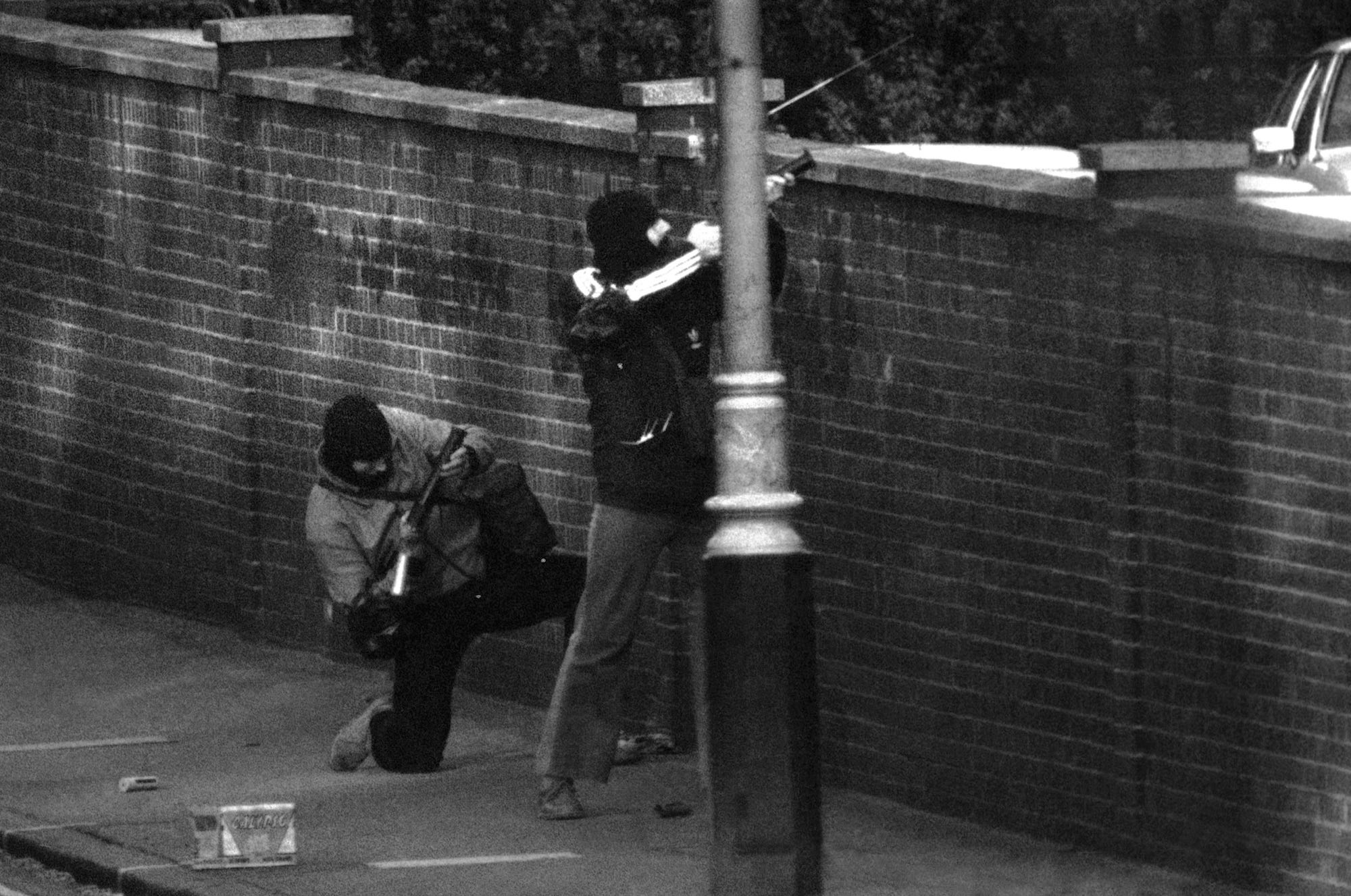
AP Photo
To buy more time, the British government had agreed to broadcast the terrorists' demands on the BBC.
Although that appeased the hostage-takers, negotiations were still tense. Meanwhile, the SAS was continuously preparing and rehearsing their plan.
"It was along day as we said hurry up and wait," said Rusty Firmin, a retired SAS operator who participated in the operation as a team leader.
"It was the start of a waiting game as negotiations were a key to buying time. That would give us time to plan and prepare. Max Vernon the lead negotiator did a great job," Firmin said.
Then, as negotiations went on, the terrorists killed two hostages and threw the body of one on the pavement outside the embassy, threatening to continue executing one hostage every 30 minutes until their demands were met.
Until that point, it was a law-enforcement operation. But the executions changed the rules of engagement. The SAS had their green light.
Operation Nimrod
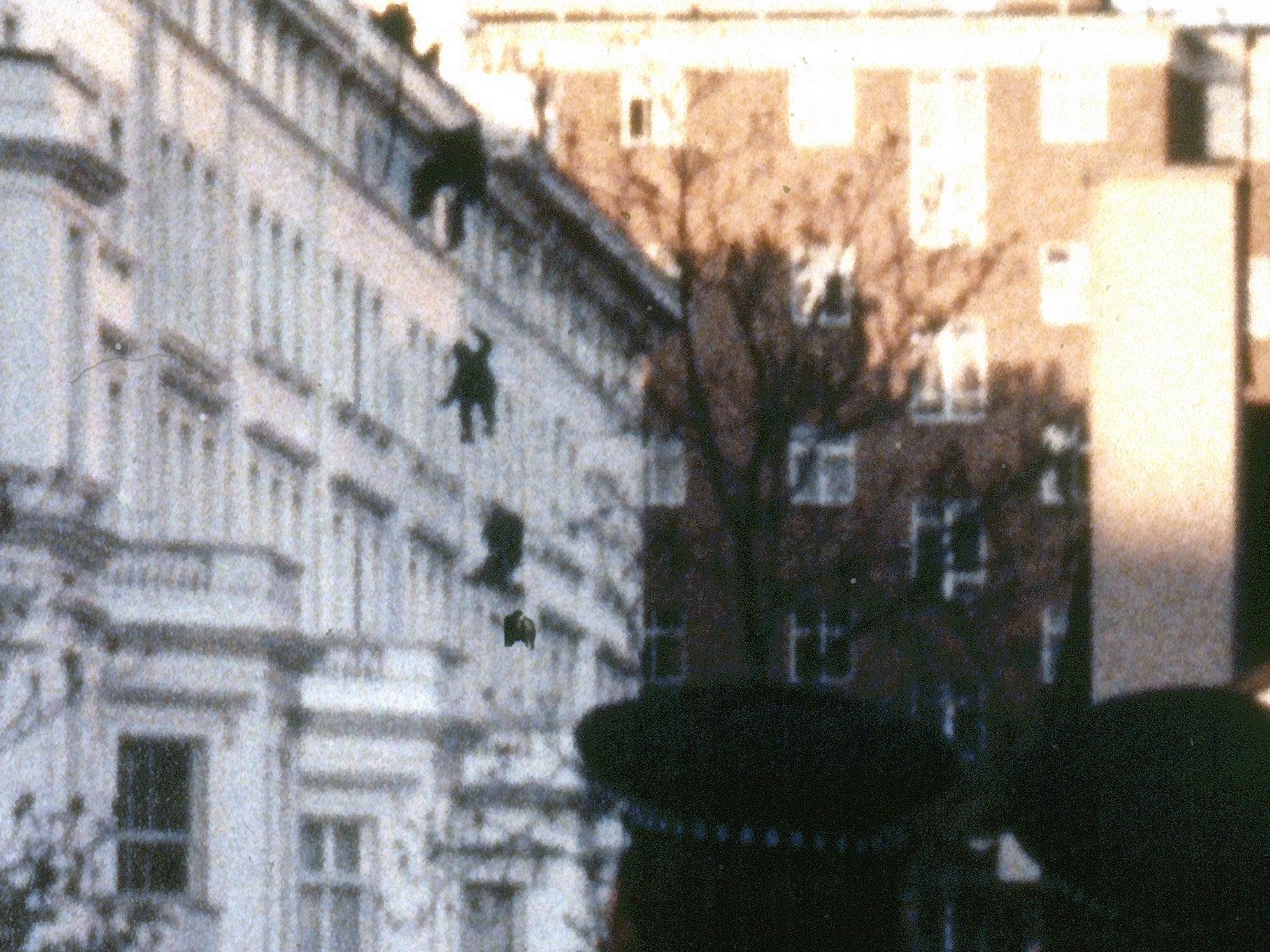
AP Photo
The SAS operators had selected four entry points.
First, the embassy's front windows on the first floor, which they would reach through the adjacent balconies; second, the embassy's back windows on the second floor, which they would reach by rappelling; third, the embassy's skylight, which they would reach from the roof; and fourth, the embassy's rear door on the ground floor, which they would reach from the street.
The plan was to breach the four points simultaneously and flood the building with operators who would assault the terrorists from multiple angles.
The SAS operators moved from their hiding places to the final assault positions. This maneuver took almost 16 minutes, as they had to be careful not to give themselves away and lose the crucial element of surprise.
On the back of the building, as the SAS operators were rappelling into position, the team leader's zip line became stuck, and another operator accidentally broke a window trying to help him. The noise alerted the terrorists, and the SAS operators were forced to adjust on the fly and storm the second floor without waiting for the other two teams.
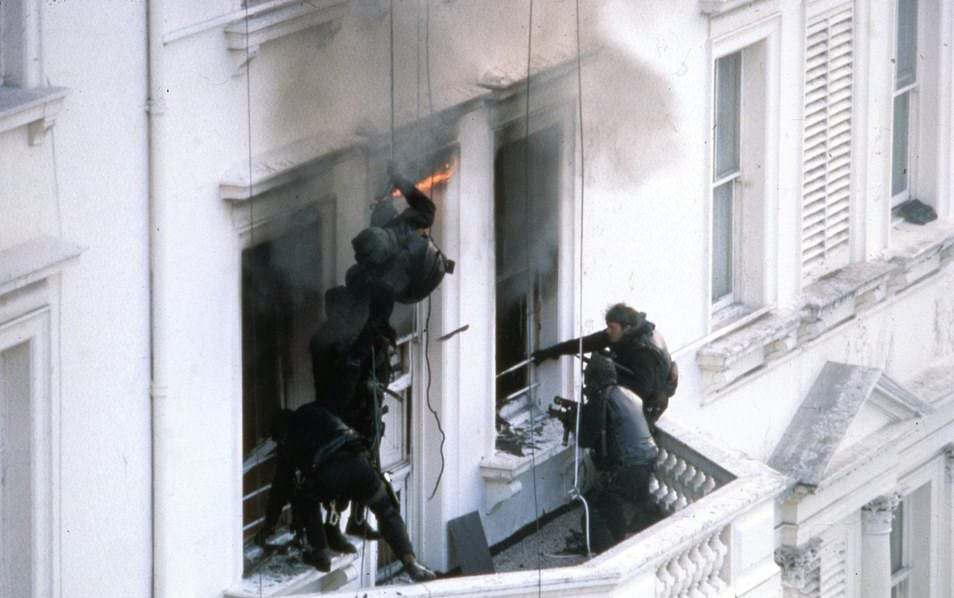
British Ministry of Defense
However, the curtains were lit on fire by the flash-bang grenades and the breaching charges, and the stuck team leader suffered some minor burns. Despite the inconvenience, he still led his team into the breach.
The terrorists had barricaded themselves, and once they heard the commotion from the SAS, they started shooting at the hostages, killing one and wounding two. The SAS operators stormed the room and neutralized most of the terrorists.
One terrorist disguised himself as a hostage and planned to detonate a grenade in the crowd. A real hostage alerted the SAS operators, however, and they spotted and killed the imposter.
At the front entry point, two breachers scaled the parapet that divided the buildings and dropped in the Iranian Embassy's balcony, placing a breaching charge and barely clearing the blast. The assault team then stormed in.
On the roof skylight, SAS operators rappelled in and cleared the third and fourth floors, which ended up being empty. The fourth SAS element breached the building and entered on the ground floor, which was also empty.
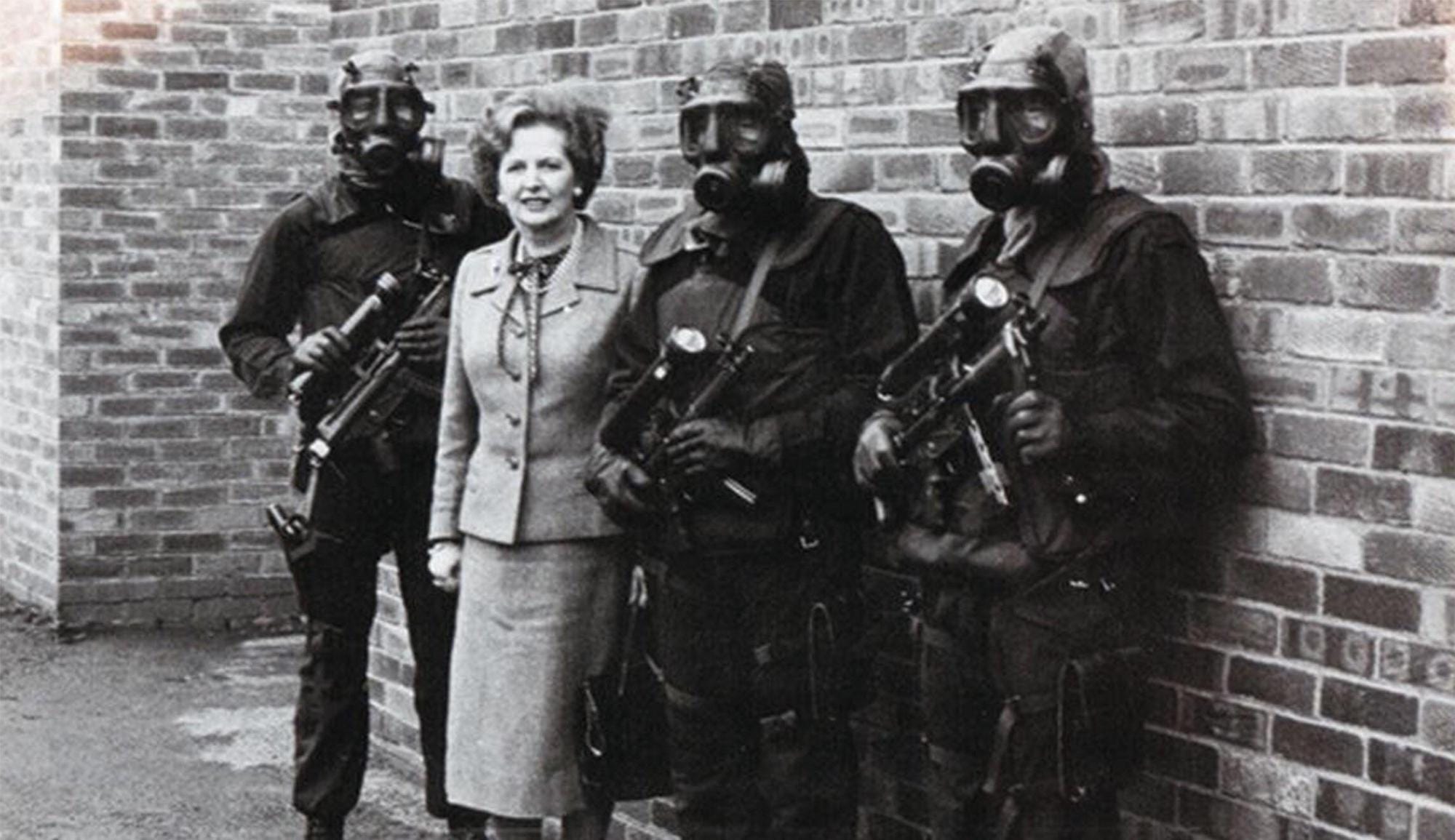
British Ministry of Defense
The hostage-rescue operation was over in just 17 minutes.
The terrorists killed one hostage before the SAS operations could intervene, while two others being held were wounded during the raid. Four terrorists were killed and a wounded one was captured. The SAS suffered only one wounded.
Operation Nimrod was a success, and because much of it was caught on live television, it propelled the SAS into the public spotlight.
The mission also had a lasting impact on the world of special-operations and counterterrorism, influencing the gear that the SAS and other units used and producing many lessons they would apply in future operations.
Stavros Atlamazoglou is a defense journalist specializing in special operations, a Hellenic Army veteran (national service with the 575th Marine Battalion and Army HQ), and a Johns Hopkins University graduate.
Dit artikel is oorspronkelijk verschenen op z24.nl
